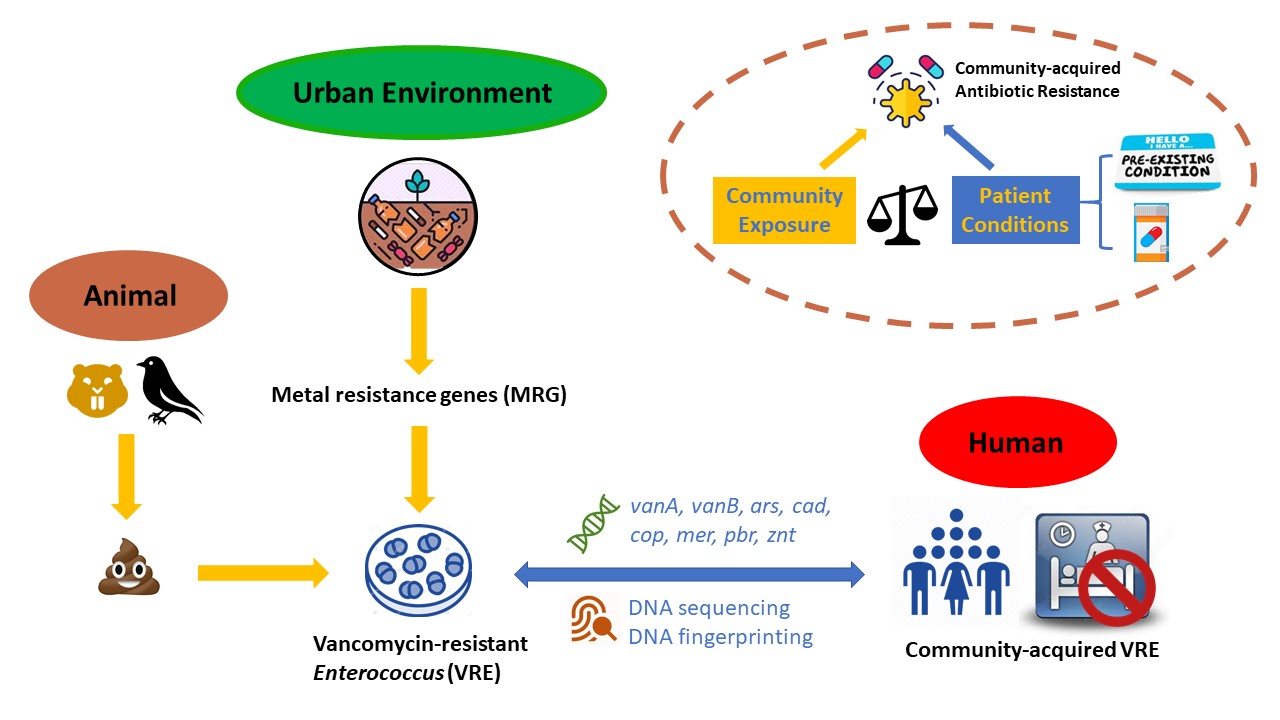Applying the One Health Approach to Identifying Community Risk Factors for Antibiotic Resistance in Southeastern Michigan
Abstract
Urban environment is a critical component in the one health framework with respect to antibiotic resistance since the microbial environment in urban settings is not only shaped by anthropogenic, transportation, and industrial activities, but also receives antibiotic resistance from urban wastes and wildlife, which can be returned to human through environmental and wildlife exposure. Although clinical risk factors exist for contracting vancomycin-resistant Enterococcus (VRE), they cannot explain all community-acquired VRE infections. Heavy metals are common urban contaminants and have been suggested as alternative selective pressure for antibiotic resistance. Wildlife exposure is another risk factor due to the carriage of antibiotic resistance genes (ARG) by animals and the zoonotic nature of many infectious diseases. We hypothesize that community-acquired antibiotic resistance in the urban environment has a stronger correlation with metal resistance genes (MRG) and wildlife exposure than with patient conditions, such as underlying diseases and antibiotic use. We will connect patient information, wildlife sampling, with ARG and MRG compositions in VRE isolates. The data will demonstrate animal and environmental indications in bacteria of clinical importance. It will ultimately help identify community risk factors and routes of transmission to develop control measures.
